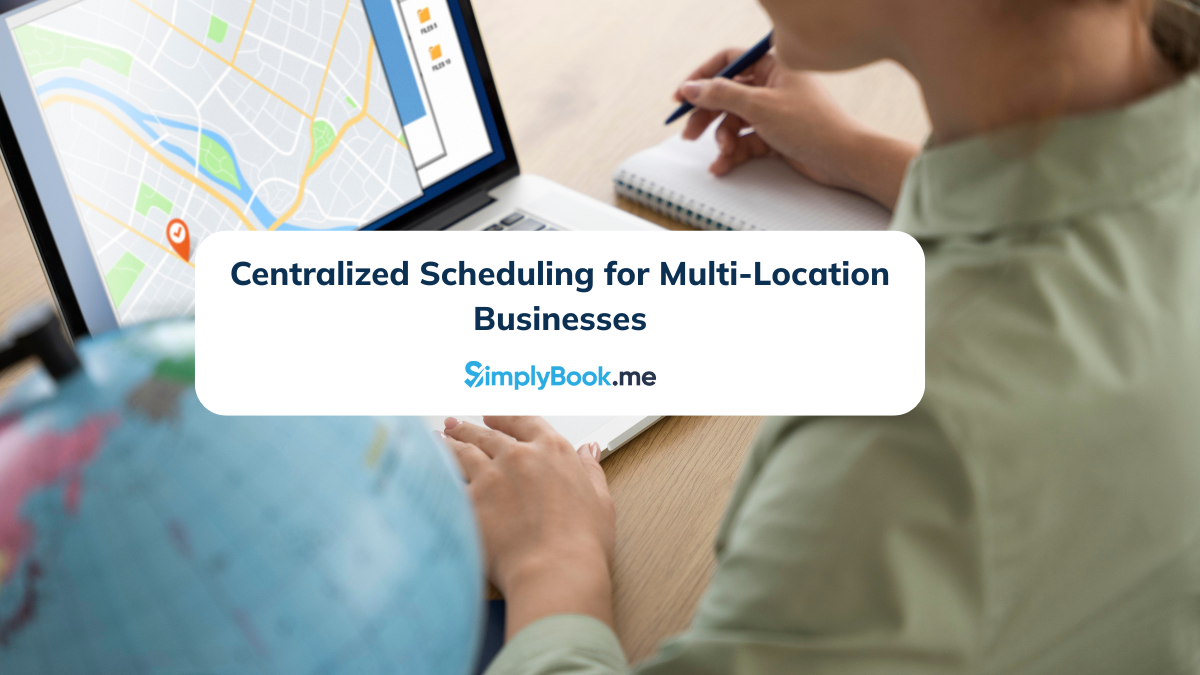7 Key Email Newsletter Metrics You Should Track & How to Fix Them

This post is also available in:
![]()
![]()
![]()
![]()
Newsletters form an integral part of most email marketing campaigns. They have phenomenal reach and have been known to drive engagement and conversions, making them a highly effective one-on-one form of communication. But do you know what seals the deal in their favor? It’s the data they generate. Data is what makes every marketer’s world go round. Few other channels can boast the sort of precise data that email marketing provides. That’s why tracking newsletter metrics is crucial.
Newsletter campaigns generate tonnes of data, and if you know where to look, it’ll tell you why nobody’s reading your newsletters; if they are, why aren’t they visiting your website; and if they’re doing that too, why they never end up buying. And a whole lot of other answers that take you closer to perfecting your newsletters.
But because of the sheer quantity of this data and the numerous ways it can be processed, looking for those answers can be a bit needle-in-haystack-y. So here’s a list of seven email newsletter metrics that deserve your time and attention:
Open rates
Most Email Service Providers (ESPs) automatically generate an open rate for your campaign. If you want to double-check the numbers, here’s how:
Another way to go about it is deducting unsuccessful deliveries from the total emails sent.
As recently as September 2022, the average email open rate across all industries was 31.50% – a nearly 10% rise from last year.
It’s not a coincidence that it corresponds with Apple’s new privacy policy that preloads emails sent to iOS users before they’ve been opened, resulting in nearly 100% open rates.
It does cast doubts on the reliability of this data, but raising open rates should be a universal campaign goal. Newsletters that remain unopened won’t be read and will undermine the potential of your newsletters, no matter how carefully planned.
Ways to increase email open rate
The first thing you need to work on is also the first thing that users see when your email lands in their inbox — the subject line. A personalized subject line containing their name, location, or recent activity on your website can help increase opens. Put in a pre-header text that neatly dovetails with the subject line.
And before you send that email, ask yourself if you’re sending it to the right person. Segment your users based on demographics, psychographics, purchase behavior, etc., and use it to time your communication with them. If all their previous appointments with you have been over the weekend, you can send them a personalized voucher on Thursdays or Fridays.
Click-through rate
Your emails might be a fun read, but the true test of the effectiveness of your email copy is whether it evokes enough of a response in recipients to click on the links in it. With the opacity surrounding open rates now, the click-through rate has become more critical than ever before to measure user engagement.
The average is a dismal 1.38%, so raising it should be a priority.
Ways to increase CTR
Gamification emails are a hit with customers, and 60% of them would consider buying from you if they liked a game created by you. You can send your users a quiz or try something simple like L’Occitane’s scratch-off email.
If all that is too high-tech for you, work on the basics. Implement mobile optimization and CTA buttons that stand out more than hyperlinked text.
Landing pages matter too. Are yours relevant and well-designed? If users think they’re being clickbaited, they’ll view your messaging as gimmicky and stop engaging with it altogether.
List growth rate
Keeping existing customers and controlling churn is important, but you can’t have real growth unless you sell to people who haven’t bought from you before. And for that, you will need a continual influx of new subscribers.
The list growth rate is calculated as follows:
You can refine your numbers a little more by also factoring in spam complaints alongside unsubscribe requests.
Ways to increase the list growth rate
Bigger businesses often partner with social media influencers and run ads on Google and platforms like Facebook and Instagram to generate leads.
Suppose that doesn’t seem sustainable for your business model. In that case, you can use alternate social media channels like Quora, Medium and Pinterest and increase subscribers over 3x in two months, as this marketer did.
Segmented pop-ups and website widgets on your website let you send targeted messages to visitors based on their intent. For example, Mejuri shows this small, unobtrusive pop-up to encourage first-time visitors to their website to sign up for their newsletter.
Conversion rate
Every email you send should have a purpose. It might be to drive website traffic or generate awareness about your brand. But a newsletter campaign cannot be successful unless the person reading it takes the action the sender wanted them to, which is reflected in the metrics. This includes not only website conversions but also conversions within your mobile app. Tracking the mobile app conversion rate is crucial for understanding the effectiveness of your newsletter campaigns in driving actions within the app.
The average conversion rate of emails was 15.22% in 2021.
But results differ from email to email, depending on the ultimate goal. So the conversion rate for an email encouraging new users to download their free ebook might be significantly higher than a re-engagement email asking them to book your services again.
Ways to increase conversion rate
According to a 2017 study by Dynamic Yield, personalization, both in the offer and email content, can get positive responses to an email from 88% of customers.
Suppose your click-through rate is decent, but the conversion rate isn’t. Build consumer trust in your brand. If you sell a scalable service, offer a money-back guarantee. If you don’t, include client testimonials in your email copy.
Landing pages, too, should be carefully designed. And you can enable Simplybook’s loyalty program feature to encourage shares and, subsequently, conversions.
And customers often need more than one reminder to take action. A follow-up sequence will push them deeper into the sales funnel.
Bounce rate
Not every email you send makes it to the recipient’s inbox. The email address might not exist or be invalid (hard bounce), or the inbox or server might temporarily reject emails (soft bounce).
The average hard bounce rate is 0.40%, and the average soft bounce rate across industries is 0.58%. If you’re in the construction or manufacturing sector, the rate can go up to twice the average rate.
Ways to reduce bounce rate
Depending on the type of bounce, you can take remedial actions to control your overall bounce rate.
Suppose you’ve been sending newsletters to dead, defunct, or non-existent email addresses. In that case, it hasn’t just skewed all your campaign’s newsletter metrics; it’s also caused your sender’s reputation to tank. This leads to even more hard bounces as spam filters start viewing your emails with suspicion. Verifying the email addresses on your list annually or semi-annually will rid it of deadweight and maintain list hygiene.
To prevent soft bounces, keep email size under 102 kB and set up security protocols like SPF, DKIM and DMARC. These provide an extra layer of authenticity to your emails and improve their chances of placement in the inbox instead of spam or the promotions folder.
Unsubscribe rate
No one wants to lose a hard-earned lead. But unsubscribes are inevitable in every email campaign, and you will surely receive unsubscribe requests after most emails you send. It could be because recipients find your content irrelevant or your communication too frequent, and it’s also possible that they’ve lost interest.
To calculate the unsubscribe rate or the percentage who have opted out after receiving the email:
The average unsubscribe rate, according to MailChimp data, is 0.26%.
Ways to reduce unsubscribe rate
With careful introspection and a little diligence, you can reduce this number. The first step is to find out the reason for unsubscribes. Take the guesswork out of the equation by redirecting unsubscribing users to a survey form. You could also include an option to change their preferences for interests and frequency of communication (opt-downs) to discourage complete opt-outs.
Balance the content of your emails to have a mix of sales-y and practical information. For example, if your previous newsletter was about a new line of services you’ve launched, change things up. This time, send them a round-up of tips from experts on how to get the most out of the service they’ve already contracted you for.
Classify them into different categories according to where they fall in the sales funnel (top, middle or bottom) and only send them messages appropriate to their intent.
Generated revenue (ROI)
Email newsletter marketing gives unmatched returns on investment – a whopping £38 for every £1 spent. The more tangible your campaign goals are, say, an increase in bookings through email outreach vs positive brand recognition on Facebook, the easier it will be to calculate the ROI.
And not all industries can expect uniform returns on email marketing spending.
Ways to increase ROI on your newsletter campaigns
Once you’ve clearly defined your goals, invest time in qualifying leads. You’re spending months’ worth of time, effort, and money communicating with your subscribers. Track their activity across different channels to determine which leads have the most potential to convert. Focus most of your energies on them.
Be innovative in your emails by using personalized videos, behavioral triggers, and different sequences for different segments of users. Omni-channel marketing (on the platforms your target audience is most active on) will also strengthen newsletter engagement metrics and returns.
Wrapping up
Without the constant monitoring of these seven key newsletter metrics, it’ll be difficult to quantify the success of your newsletters. Because of their highly sensitive nature, even minor tweaks to your campaigns can have a dramatic effect. Some minor tweaks include sending emails at a different time of the day or not sending that extra follow-up.
You’ll gain plenty of insights into consumer expectations, behavior, and how to stay on top of your email marketing game. Just in case you worry about the time it’s going to take to write all those newsletters and make them look good, Simplybook.me’s got your back with their handy email creator.
You can repurpose any of the templates to your liking and hit send. You can also use any of these marketing tools to bolster your digital presence and make your calendar fuller than ever.
About Author: Antonio Gabrić
Antonio is an outreach manager at Hunter. He is passionate about testing different outreach tactics and sharing results with the community. When he is not connecting with industry leaders, you can find him on his motorbike exploring off-the-beaten paths worldwide.


Comments
0 commentsNo comments yet